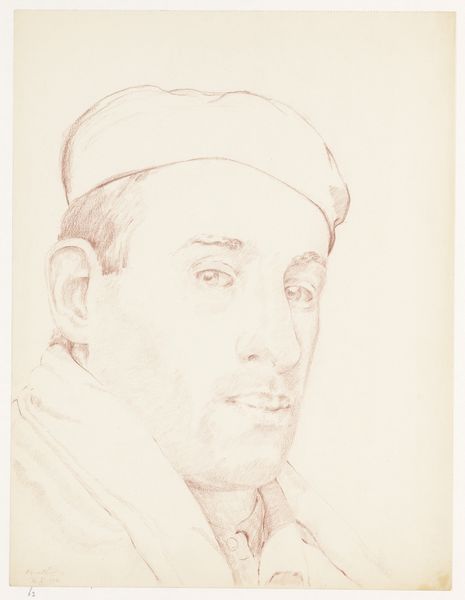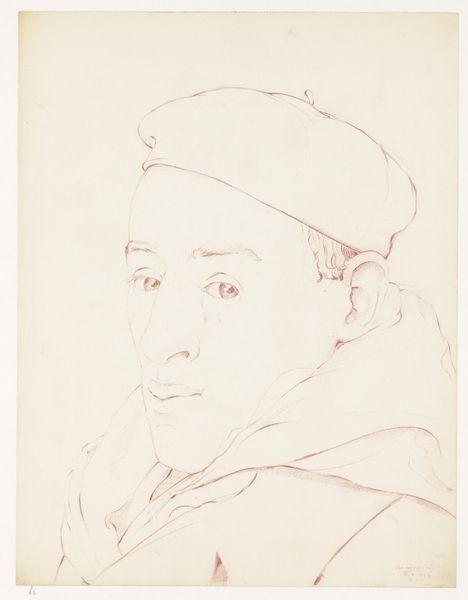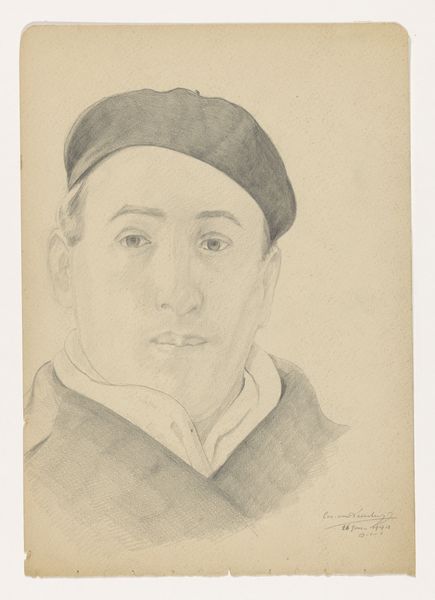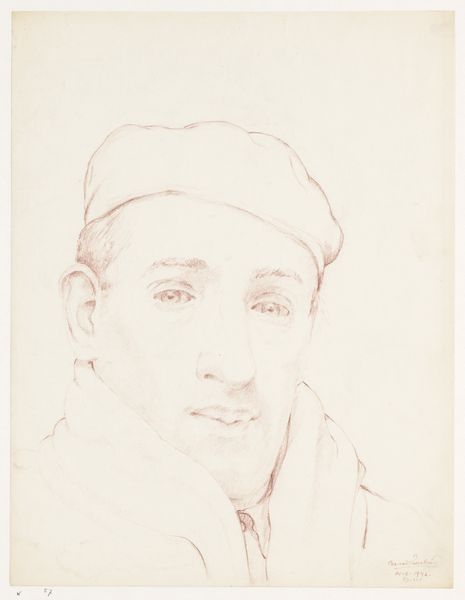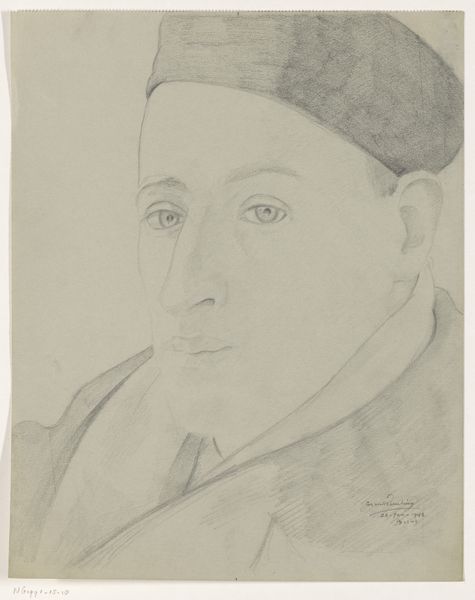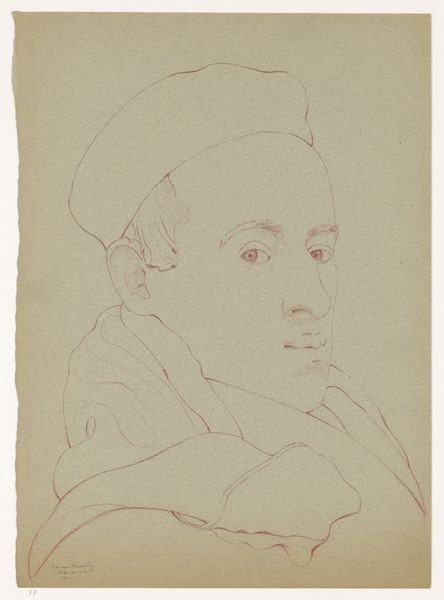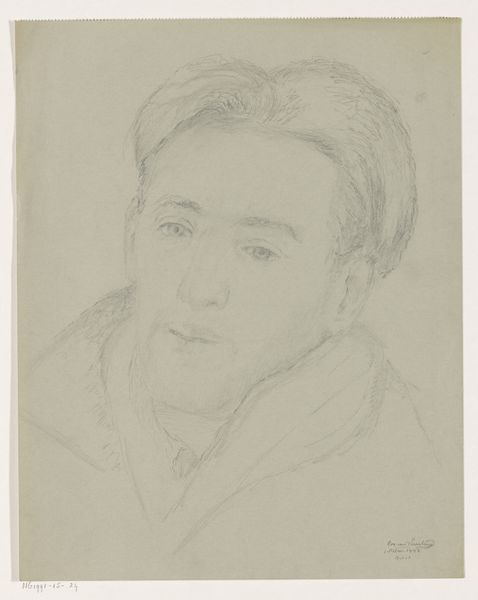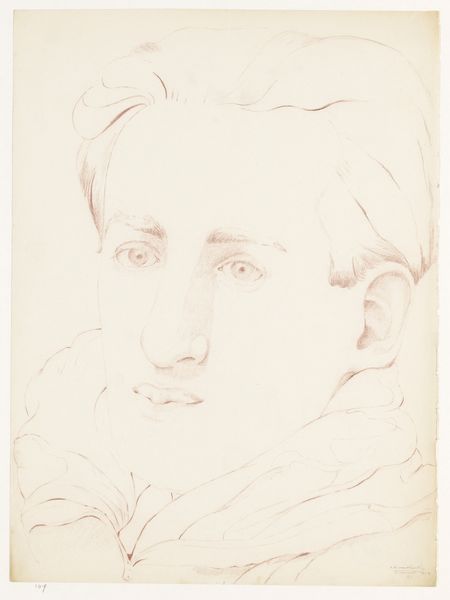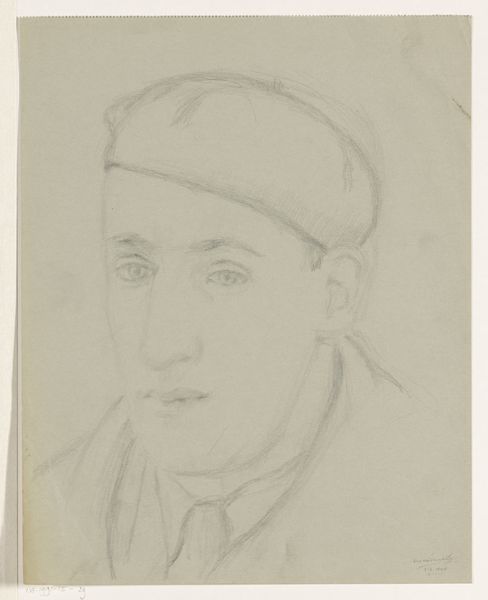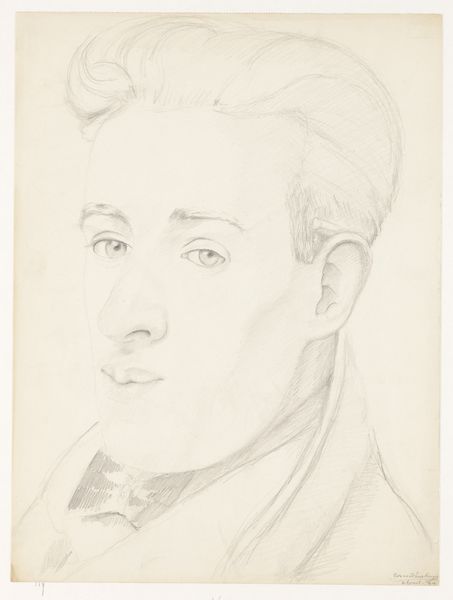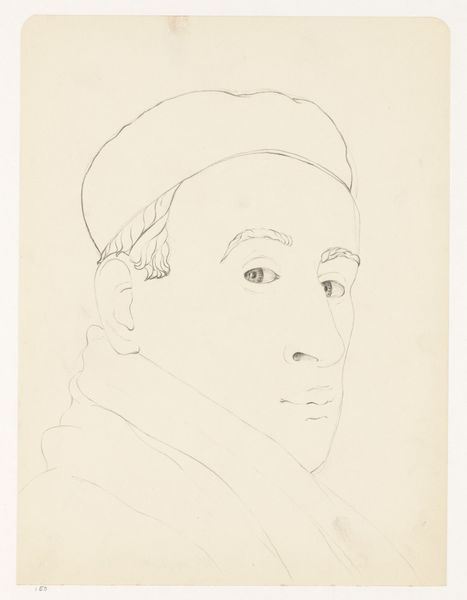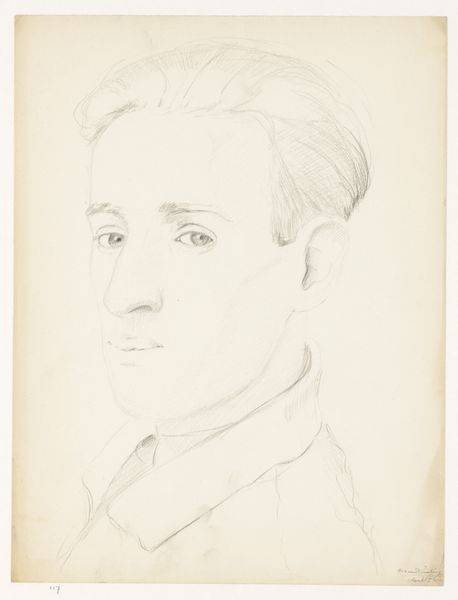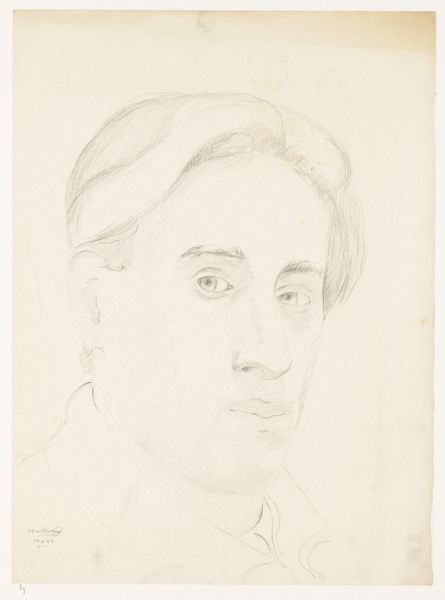
drawing, pencil, graphite
#
portrait
#
drawing
#
self-portrait
#
pencil drawing
#
pencil
#
line
#
graphite
#
academic-art
#
realism
Dimensions: height 35.5 cm, width 27.0 cm
Copyright: Rijks Museum: Open Domain
Editor: Here we have Cor van Teeseling’s "Self-Portrait with Cap: B-1-1, 17 February," possibly from 1942, created with pencil and graphite. It’s incredibly delicate, almost fragile-looking. What strikes you about this piece? Curator: The presumed date of 1942 is critical. Consider the context: the Netherlands was under Nazi occupation. A self-portrait at this time…it begs the question, what public image was Teeseling attempting to cultivate, and for whom? Was this act of self-representation a subtle act of resistance or compliance within that oppressive environment? Editor: Resistance? It’s just a drawing. Curator: But images are never "just" images. The very act of creating and possibly displaying this portrait could have been fraught with danger, depending on its perceived message. Is he aligning with a specific ideal or class? Think about who controlled artistic expression at that time. Editor: So, the seemingly simple cap, the subtle expression, could be read as defiance? Curator: Precisely. Consider the role of portraiture during wartime; it's often used for propaganda, to project strength or idealize national identity. What does Teeseling reject or subvert, visually, in this environment? Or, to the contrary, what does this work adopt from accepted visual communication codes? Editor: I hadn’t thought about it that way. It makes me look at the subtlety of the line work differently. Thanks for offering this historical perspective. Curator: Indeed. Context transforms our understanding of artistic intent and public reception.
Comments
No comments
Be the first to comment and join the conversation on the ultimate creative platform.
